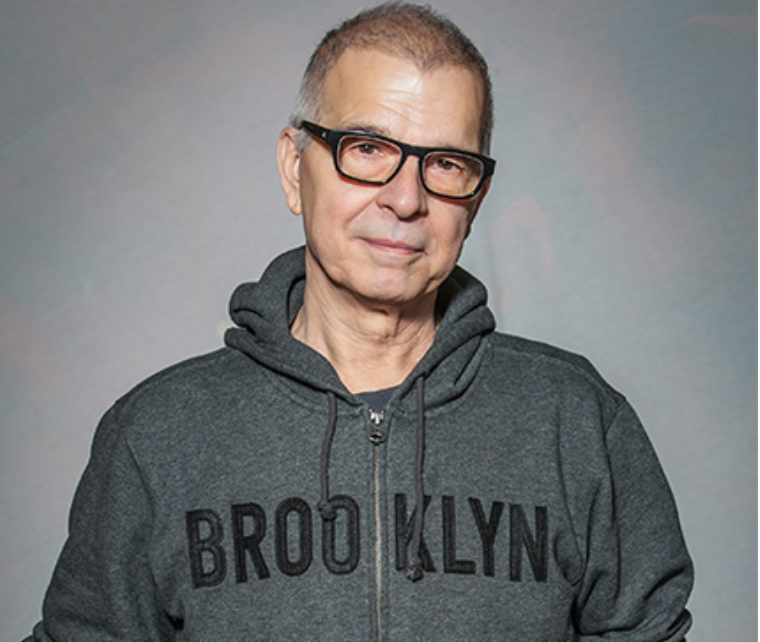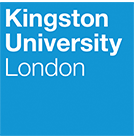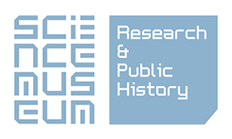RESEARCH MISSION
As an inclusive creative practice and research hub, Visconti Studio’s aims are:
1. to facilitate both the preservation and further evolution of analogue music recording and studio practices;
2. to experiment with analogue and digital practices in order to explore the agencies inherent to studio-based creativity;
3. to interrogate cultural and technological histories, analogue nostalgia, and the materialism(s) of analogue and digital studio through documentation and analysis;
4. to have an impact on scholarly and practice-led research, creative and educational practice and industry decision-making.
The Studio’s large acoustic space and collection of vintage analogue equipment and instruments have attracted acclaimed musicians, producers and engineers. Legendary producers such as Tony Visconti, Chris Kimsey and Pete Walsh work in the Studio with staff, students and visiting artists to share their wealth of knowledge and produce new materials. We organise public research events, workshops and podcasts in Kingston.
Our core researchers are Isabella van Elferen, Leah Kardos, Michael Gatt and Jess Aslan, whose research interests are listed on our team page. Researchers affiliated with the Studio explore the relationship between the analogue and the digital more widely, study practices of media archaeology, research cultural nostalgia and heritage, or question media specificities and media affordances. Those include Oded Ben-Tal, Scott Wilson, Maria Chatzichristodoulou and Simon Brown. Practice-researcher and composer Oded Ben-Tal applies innovative machine learning methodologies to music, exploring the potential of artificial and biological intelligence working together in musical creation; his research has attracted AHRC awards and his compositions have received international accolades.
Visconti Studio’s research is closely aligned with the creative and music industry. Our partnerships with influential music producers open up a wealth of knowledge and professional networks not only to Kingston University students and researchers but also to our many visiting artists. Aiming to revive and preserve analogue practices so as to propel them into the digital era, Visconti Studio aspires to impact the music industry by bringing together analogue equipment, practices and histories with digital technology. We collaborate with, among other industry partners, Olympic Studios and Trident Audio. Our record label Acid Grass Records develops student recording and production, and the Kingston University Stylophone Orchestra is bringing out the world’s first stylophone album, Stylophonika, with the Kingston-based Spun Out Of Control label in 2021.
“TAPE IS A BEAST”
ICONIC SOUNDS, WIDENING PARTICIPATION
Visconti Studio podcast with special guests Tony Visconti, Chris Kimsey, Martin Terefe, George Murphy and Andy Cook
08-08-2020
Isabella and Leah talk about analogue studios, sounds, and heritage with producers Tony Visconti and Chris Kimsey, recording engineer Andy Cook (British Grove Studios), producer Martin Terefe (Eastcote and Kensaltown Studios) and engineer George Murphy (Eastcote Studios).
We discuss the recording and production practices that shaped the iconic records of the past, from the abuse of tape to the slow process of recording and editing analogue media. Talking us through some of their experiences in the studio with David Bowie and The Rolling Stones, Tony and Chris reveal some of their own creative approaches to tape-based production. Analogue not only produces different tone qualities, it favours preparedness and demands musicianship, dictating the pace and method of working collaboratively in studios. During the conversation our guests discuss hybrid digital/analogue approaches, and what benefits these different workflows provide.
The COVID crisis has posed a big challenge for studio culture. British Grove Studios tragically lost its leader David Stewart to the virus. Many studios find themselves in a precarious financial position and social distancing creates challenges for business that need to get back to work. Studios have to think creatively about new avenues, and one of the ways forward is education and training. We discuss the role of education in the preservation of analogue heritage as well as training young people in tape-based production, passing down the knowledge of London’s iconic studio sounds, keeping this knowledge relevant and accessible for future generations. Analogue, as Chris says, is “the pure embodiment of sound itself” – and education can keep this fragile recording culture alive in practice.
Sound credits:
Rolling Stones, “Some Girls” produced by Chris Kimsey
David Bowie, “Scream Like A Baby” produced by Tony Visconti
Ron Sexsmith, “Whatever it Takes” produced by Martin Terefe
Nicholas Britell, “Master of the Butterfly Knife” recorded at British Grove Studios
Podcast produced and edited by Rob Plummer

Tony Visconti is a multiple Grammy award-winning producer, arranger, composer and multi-instrumentalist, known as one of the most influential producers of the glam rock era through his acclaimed work with David Bowie and T. Rex, among many others. Tony holds an honorary doctorate with Kingston University where is also a visiting professor. Based in NYC, Tony sometimes produces and teaches at the large format hybrid studio at Kingston University that also bears his name.

Chris Kimsey is a renowned and highly respected studio engineer, producer and mixer. Chris started his career at the famous Olympic Studios in Barnes under the tutorage of Keith Grant, Jimmy Miller and Glyn Johns, and is famous for his long working relationship with The Rolling Stones. Chris is currently managing the studio rebuild at the historic Olympic site, and has taught tape-based analogue production and engineering techniques at Visconti Studio, Kingston University.

Andy Cook is an in-house engineer at British Grove Studios and has been working professionally in the industry for almost a decade. He has worked with a wide variety of artists and recorded and mixed various television and film scores.

Martin Terefe is a Swedish record producer and songwriter, now living and working in London who has produced Grammy, Brit and Juno award -winning records with artists like Jason Mraz, James Morrison, KT Tunstall, A-ha, Ron Sexsmith, and Mary J Blige. He is the owner of Eastcote and Kensaltown studios and a founding member of the multi-disciplinary art collective Apparatjik.

George Murphy is a sound engineer, mixer and producer based in London. Currently the Head Engineer at Eastcote Studios, George specialises in working with bands and other live ensembles, using the best analogue and digital gear he can get his hands on.
Visconti Studio is working with musicians and heritage organisations to preserve the sounds and practices of the analogue past for the digital future.
It’s impossible to imagine the 1960s and 1970s without music. It was the age when iconic record studios such as Abbey Road, Trident and Olympic experimented with analogue technologies to produce and record songs that continue to resonate today. Even in this digital age, vinyl is experiencing a revival; led by David Bowie’s Blackstar album, 3.2 million LPs were sold in the UK in 2016, representing a 53% increase on the previous year. This resurgence can’t be explained away by vinyl’s trademark crackle alone. Digital technologies are not only transforming the quality of sound, they are shaping our social and cultural experiences. Listening to and handling LPs or cassettes allows us to relive a bygone era – an era that could be confined to the annals of history if the analogue recording and production techniques associated with it aren’t judiciously preserved.
Losing a rich heritage
“Analogue music studio practices are becoming obsolete,” says Dr Leah Kardos, Senior Lecturer in Music at Kingston University London. “As the original practitioners are ageing, few engineers and producers specialise in analogue studio work anymore. Spare parts for vintage equipment are increasingly hard to get and the practical knowledge associated with their operation and repair is being lost. The rich heritage of analogue studio practices is on the verge of disappearing.”
Dr Kardos is project leader at Kingston University’s Visconti Studio, a practice research facility named after the legendary music producer Tony Visconti. Led by Professor Isabella van Elferen, the studio is at the heart of a large-scale, collaborative research project with the British Library and Science Museum. Equipped with a rare collection of vintage instruments, its aim is to not only document and safeguard the legacy of the analogue age, but to actively revive analogue objects and practices. “Analogue production and recording practices have an important heritage value, but this heritage is not sufficiently protected,” Dr Kardos continues. “The analogue studio’s material and practices require public and academic attention, which is why The British Analogue Music Studio: Heritage, Nostalgia, Future is documenting, capturing, and preserving these practices.”
Recording the future
To date, Visconti Studio has already produced music with singer-songwriter Mary Epworth, the band Artbreak, and recorded material for Oly Ralfe’s new album as well as for the group Flight Brigade. Over time, the research team expects to produce a number of significant outputs, from musicological publications to records, tracks and albums, videos and interviews.
Methodology
The research project is divided into three core strands:
- Analogue Analysis – researchers will analyse material such as songs, analogue technologies and scores; musical practices such as composition, recording and production; and cultural trends such as technostalgia and retrofuturism;
- Analogue Archaeology – visiting artists and well-known producers, including Tony Visconti, will work alongside students and researchers to observe and share production practices, as well as create new compositions;
- Analogue Heritage – various aspects of analogue studio culture will be preserved and made accessible to the public. Songs will be digitised, technology collections curated for museums, creative practices revived and paper collections archived.
A public-facing archive
The outcomes of the research will be publically shared in a number of ways: through an open access online archive containing audio files, photos, interviews and videos; through an interactive forum of citizen science called “Analogue Audiophiles”; in public workshops at Visconti Studio, the British Library, and the Science Museum; and in, in 2020, a month-long international Analogue Music Studio Festival.
In partnership with
Bibliography
Bartmanski, D., & Woodward, I. (2015). Vinyl: The Analogue Record in the Digital Age. Bloomsbury Publishing.
Bennett, S. (2012). “Endless analogue: situating vintage technologies in the contemporary recording & production workplace.” Journal on the Art of Record Production, 7.
Cartwright,A., P., Besson, E., & Maubisson, L. (2013). Nostalgia and technology innovation driving retro music consumption. European Journal of Innovation Management, 16(4), 459-494.
Christopher, R. (2014). “Nostalgia, Memory, and the Haunting of Hip Hop.” The Routledge Companion to Remix Studies, 204.
Eno, Brian. “The studio as compositional tool.” Audio culture: Readings in modern music (2004): 127-130.
Greene, Paul D. and Thomas Porcello (eds) (2005) Wired for Sound: Engineering and Technologies in Sonic Cultures. Wesleyan University Press.
Higson, A. (2014). Nostalgia is not what it used to be: heritage films, nostalgia websites and contemporary consumers. Consumption Markets & Culture, 17(2), 120-142.
Hogarty, J. (2015). “Memories of the Material/Vestiges of the Virtual: Exploring the Impact of Material and Immaterial Formats on the Memory of Popular Music.” Rock Music Studies, 2(2), 148-167.
Lizardi, R. (2014). Mediated Nostalgia: Individual Memory and Contemporary Mass Media. Lexington Books.
Kardos, L. (2015). The Sonic Vernacular: Considering Communicative Timbral Gestures in Modern Music Production. In Audio Engineering Society Convention 138. Audio Engineering Society.
Katz, M. (2004) Capturing Sound: How Technology has Changed Music. Berkeley, CA: University of California Press.
McCarthy, A. (2010) Living with Digital, Resurrecting Analog, and Our Shifting Search for Sound. Gnovis: A Journal of Communication, Culture and Technology. http://www.gnovisjournal.org/2010/04/25/living-digital-resurrecting-analog-and-our-shifting-search-sound/
Massey, H. (2015) The Great British Recording Studios. Milwaukee, WI: Hal Leonard Books.
Milner, Greg (2009) Perfecting Sound Forever: the Story of Recorded Music. Faber & Faber.
Moore, A.F. (2012) Song Means: Analysing and Interpreting Recorded Popular Song. Farnham: Ashgate.
Moorefield, V. (2010) The Producer as Composer: Shaping the Sounds of Popular Music. Cambridge, MA: MIT Press.
Niemeyer, K. (Ed.). (2014). Media and Nostalgia: Yearning for the Past, Present and Future. Palgrave Macmillan.
Pinch and Trocco (2002) Analog Days: The Invention and Impact of the Moog Synthesiser.
Porcello, Thomas (2004) ‘Speaking of Sound: Language and the Professionalization of Sound-Recording Engineers.’ Social Studies of Science 34(5): 733-758.
Reynolds, S (2012) Retromania: Pop Culture’s Addiction to its Own Past. London: Faber & Faber
Roberts, L. (2014). “Talkin’ bout my generation: popular music and the culture of heritage.” International Journal of Heritage Studies, 20(3), 262-280.
Schmidt Horning, Susan (2013) Chasing Sound: Technology, Culture, and the Art of Studio Recording from Edison to the LP. Johns Hopkins University Press.
Tilley, C. et al., ed. (2006) The Handbook of Material Culture. London: Sage.
Watson, A. (2014). Cultural Production in and Beyond the Recording Studio. Routledge.
Weium, F. And T. Boon, ed. (2013). Material Culture and Electronic Sound. Washington: Smithsonian Institution Scholarly Press.
van Elferen, I. and C. Blake (2015) “Sonic Media And Spectral Loops.” In Justin Edwards (ed.), Technologies of the Gothic in Literature and Culture. New York: Routledge: 60-70.
Van Elferen, I. (forthcoming) Timbre: Aesthetics of Vibration.
Van Elferen, I. (2018) “Dark Timbre: The Aesthetics of Tone Colour in Goth Music.” Popular Music 37/1
Zagorski-Thomas, S. (2014) The Musicology of Record Production. Cambridge: Cambridge University Press.


